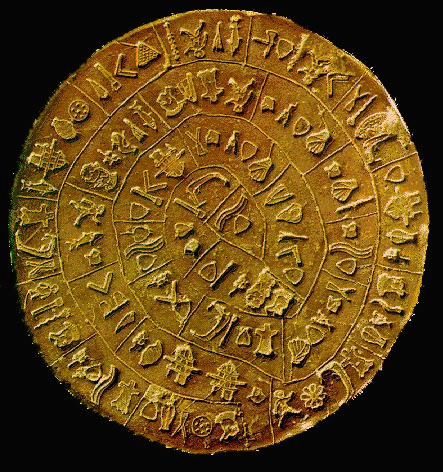The Phaistos Disk
The Phaistos Disk was discovered in 1908 in the ruins of the
palace
at Phaistos
(or Phaestos) on Crete.
The Phaistos
Disk is a baked
clay disk,
about 15 cm in diameter
and 2 cm in cross section, inscribed
on
both
sides
with pictographs reminiscent of
Egyptian
hieroglyphs.
Surrounding artifacts dated the disk at around 1600
B.C.
The
appearance of the pictographs and the type of clay
used led
researchers to suspect a
non-Cretan origin,
but similar signs
found
on a bronze double axe at
Arkalachori and
a stone artifact
at
Mallia tended
to
contradict this theory. It is now commonly
believed
that the disk is native to Crete.
Some
claim success, but no one has yet proved their ability
to
translate or even to identify
with certainty
the language of
the
Phaistos Disk.
Whatever the
mysteries of the disk's
inscription,
it may be even
more
interesting that the pictographs were stamped
into
the disk rather than written. Thus far, no
other
stamped objects have been found.
